Excerpts from Jim Conrad's
Naturalist Newsletter
from the August 20, 2018 Newsletter issued from Rancho Regenesis in the woods ±4kms west of Ek Balam Ruins; elevation ~40m (~130 ft), N20.876°, W88.170°; north-central Yucatán, MÉXICO
HEAVY CROP OF AMPELOCISSUS
This week I found a vine loaded with fully formed, healthy-looking grapes or grape-like fruits, shown below:
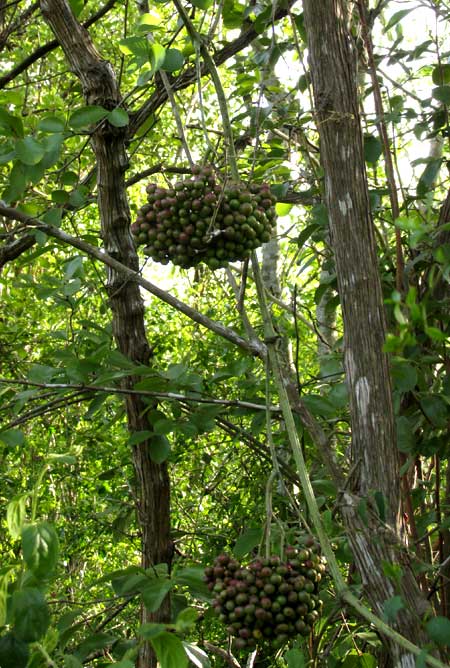
Those are immature. A bunch of ripe one is shown below:
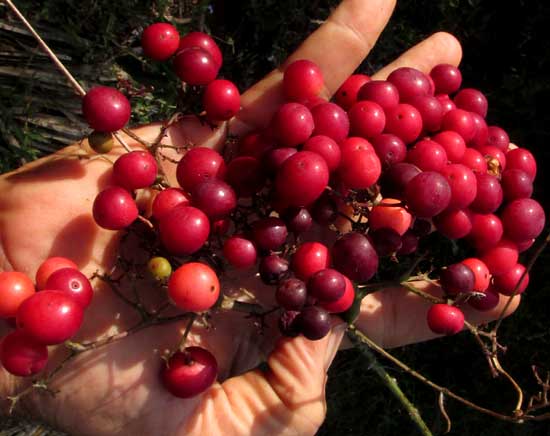
In that cluster, the bright red grapes are still too hard and bitter to taste good. The darker, purple or "grape-colored" ones are as sweet and tasty as you'd want, though compared to store-bought grapes their seeds were fairly large in relation to their flesh, as you can see below:
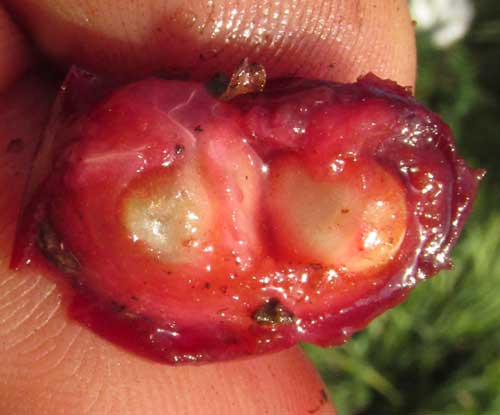
Leaves are shown below:
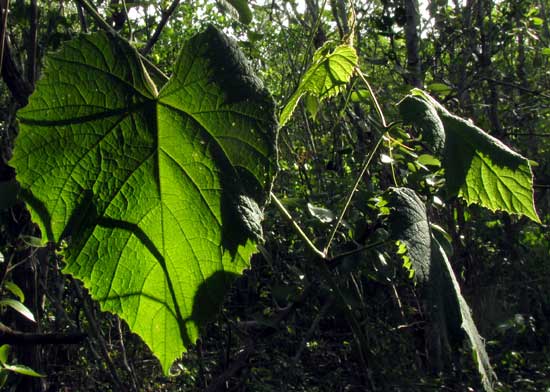
The leaves' undersides are soft-hairy and silvery, as shown close-up below:
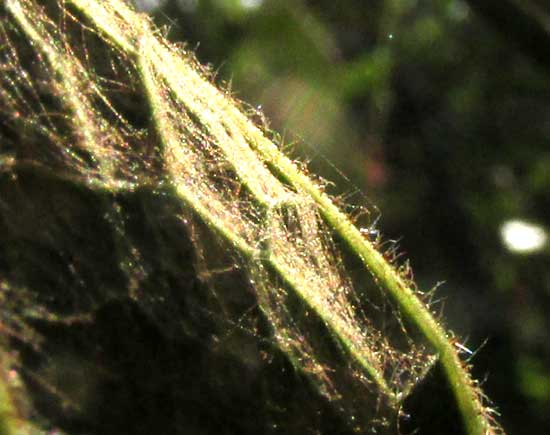
This species is fairly common in the forest surrounding the rancho, but normally it doesn't grow in dense shade and doesn't produce much.